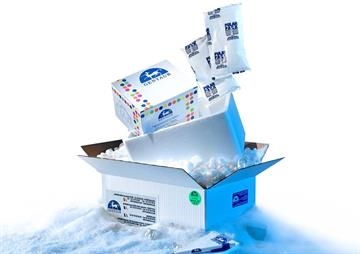- Categories
- Specials and Offers
- Custom Services
- Products
Human IL-4 protein


Human IL-4 protein
418.50 €
In Stock
quantity
product details
Catalog number: 749 - PRP2017-10ug
Product Category: Business & Industrial > Science & Laboratory
AbbkineGentaur
Size: 10 μg
Related Products
91-879
IL-4 Recombinant Protein
Interleukin-4 (IL-4) is a pleiotropic cytokine that regulates diverse T and B cell responses including cell proliferation, survival and gene expression. IL-4 is produced by mast cells, T cells, and bone marrow stromal cells. IL-4 regulates the differentiation of naive CD4+ T cells into helper Th2 cells, characterized by their cytokine-secretion profile that includes secretion of IL-4, IL-5, IL-6, IL-10, and IL-13, which favor a humoral immune response. Another dominant function of IL-4 is the regulation of immunoglobulin class switching to the IgG1 and IgE isotypes. Excessive IL-4 production by Th2 cells has been associated with elevated IgE production and allergic response.
1059.70 €
91-958
IL-4 Recombinant Protein
Interleukin-4 (IL-4) is a pleiotropic cytokine that regulates diverse T and B cell responses including cell proliferation, survival and gene expression. IL-4 is produced by mast cells, T cells, and bone marrow stromal cells. IL-4 regulates the differentiation of naive CD4+ T cells into helper Th2 cells, characterized by their cytokine-secretion profile that includes secretion of IL-4, IL-5, IL-6, IL-10, and IL-13, which favor a humoral immune response. Another dominant function of IL-4 is the regulation of immunoglobulin class switching to the IgG1 and IgE isotypes. Excessive IL-4 production by Th2 cells has been associated with elevated IgE production and allergic response.
1106.95 €
92-512
IL-4 Recombinant Protein
Mouse Interleukin-4(IL-4) is a monomeric, Th2 cytokine that shows pleiotropic effects during immune responses. It is a glycosylated polypeptide that contains three intrachain disulfide bridges and adopts a bundled four alphahelix structure. IL4 exerts its effects through two receptor complexes, Participates in at least several B-cell activation processes as well as of other cell types. IL4 is primarily expressed by Th2biased CD4+T cells, mast cells, basophils, and eosinophils. It promotes cell proliferation, survival, and immunoglobulin class switch to IgG1 and IgE in mouse B cells, acquisition of the Th2 phenotype by naïve CD4+T cells, priming and chemotaxis of mast cells, eosinophils, and basophils, and the proliferation and activation of epithelial cells. IL4 plays a dominant role in the development of allergic inflammation and asthma. It also regulates the expression of the low affinity Fc receptor for IgE (CD23) on both lymphocytes and monocytes.









